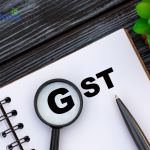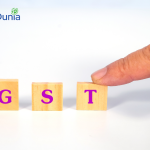Minimum Alternative Tax (MAT)
The MAT, or minimum alternative tax, was introduced so that companies can pay taxes at a certain rate on their book profits. Usually, companies claim exemptions, deductions, and depreciations to lower the taxable income and therefore become eligible to pay no tax at all. The MAT helps both parties as the government can deduct tax on a fixed amount, while the eligible companies can avoid corporate tax and pay the same on comparatively lower rates. This guide has covered all the aspects related to the minimum alternative tax, including eligibility, rate of taxability, and related provisions as well.
What is MAT & How It Works?
Under the Income Tax, MAT is a legal provision that mandates companies to pay a minimum amount of tax to the government. whether they claim deductions and exemptions, it does not affect the taxes as the payable amount has to be deposited to the government. Section 115JB regulates all companies to pay taxes equal to the higher of the following
- Minimum Alternative Tax: For the financial year 2025-26, the MAT is calculated at 15% plus additional surcharge and health and education Cess if the normal tax liability of the company is less than 15% of the book profit.
- Normal Tax Liability: as the applicable rates are revised by the Ministry of Finance. The normal tax rate is calculated on the taxable income of the company based on the applicable rates as per section 115BAA, 115BA, and 115BAB.
In case, company is a unit of an international financial services Centre and receives income solely in convertible foreign exchange, then the MAT is levied at 9% plus additional surcharge and health and education Cess.

How MAT Works?
For example, an XYZ company has a total taxable income of Rs 10 lakhs in a financial year, and it does not avail of any deductions and exemptions. The tax liability of the company would be calculated at the rate of 22% as per section 115BAA. The normal tax liability is Rs 2.2 lakhs.
Now, suppose the book profit of the company is Rs 30 lakhs as per section 115JB, and the total MAT liability would be 15% plus Cess and surcharge. Under MAT, the total liability would be Rs 4.5 lakhs plus surcharge and Cess, which is higher than the normal tax liability. Therefore, the company is required to pay a higher amount of tax and would pay the MAT in this case.
Who is Eligible to Pay MAT?
All companies, whether private or public, Indian or foreign, are liable to pay under MAT if the payable tax is less than 15% of the book profit. The tax in both cases includes Cess and surcharge.
Exceptions
On income derived from life insurance business and shipping, MAT does not apply to it as this attracts tonnage taxation under section 115VG of the Income Tax Act, 1961. MAT will also not apply to a foreign company in the following cases
- The company belongs to a specific country or territory with which the Indian government has an agreement as per section 90(1)
- The company does not have a permanent establishment in the country and has an agreement as per section 90(A1). The companies whose total income comes from profits and gains arising out of businesses are referred to in sections 44AB, 44BB, 44BBA, and 44BBB.
What is the Book Profit for the MAT Calculation?
The book profit refers to the net profit in the statement of profits and losses prepared as per the Companies Act 2013 in Schedule III. The following incomes are considered while calculating the book profit
If the following are debited from the statement of profit and loss
- Dividends (paid or proposed)
- Losses of subsidiary companies
- Unascertained liabilities
- Amounts carried to any reserves except those specified under section 33AC
- Income tax (paid or payable)
- Expenditure exempted under sections 10, 11, and 12 but excluded in section 10(38)
- Income from AOP and BOI, on which no tax is payable as per the provisions of section 86
If the following deductions are credited to the statement of profit and loss
- Amount withdrawn from any reserves
- Income exempted under sections 10, 11, and 12, but excluding sections 10(38)
- The amount of depreciation debited to the profit and loss statement
- Income from AOP and BOI, on which no tax is payable as per the provisions of section 86
- Amount withdrawn from revaluation reserve to the extent not exceeding the amount of depreciation on revaluation of assets
MAT Credit
MAT credit refers to the difference between the MAT amount and the normal tax liability. As per the above calculated example, the MAT credit is
MAT Credit = MAT (Rs 4.5 lakhs (plus cess and surcharge))- normal tax liability (Rs 2.2 lakhs (plus cess and surcharge))
MAT credit can be carried forward for the 15 assessment years from the year the MAT credit was generated. The credit can be claimed in the year in which normal tax liability is higher than the MAT. The maximum claimable MAT credit can be the difference between the normal tax liability and the MAT liability of the year for which the MAT credit is being availed.
Reach out to TaxDunia to claim the benefits and optimize the tax savings. We offer personalized services to businesses so that you can witness rapid growth. File the income tax returns to meet the liability and ensure a smooth compliance with the tax departments.












